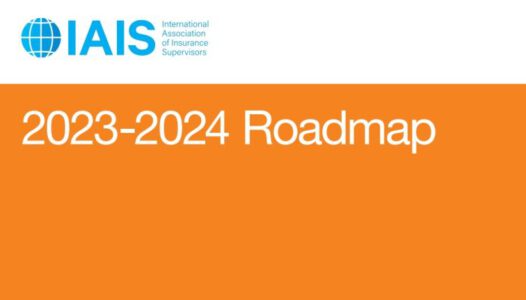The International Association of Insurance Supervisors (IAIS) has recently published a mid-year preview of its 2023 Global Monitoring Exercise (GME) analysis in advance of publishing the Global Insurance Market Report (GIMAR) in December. The GIMAR mid-year update covers (1) interim results on solvency, profitability and liquidity positions, systemic risk developments and the interconnectedness with banks; (2) an update on the key themes in scope of the 2023 GME; and (3) next steps. The GME builds on data collected from approximately 60 of the largest international insurance groups and aggregate sector-wide data from supervisors across the globe, covering over 90% of global written premiums.
“This mid-year update provides interim results of the 2023 GME, as well as a preview of the themes in scope for the deep-dive discussions supervisors will hold at the September IAIS meetings,” said Vicky Saporta, IAIS Executive Committee Chair. “Interim GME analysis found limited direct interconnectedness of the insurance sector with banks. However, we remain mindful of potential second-round effects and lessons learnt from recent bank failures, including the speed with which certain crisis events unfolded.”
Interim results
Solvency, profitability and liquidity: Interim results from the 2023 individual insurer monitoring (IIM) point to slight declines in solvency and liquidity positions while remaining well above 100%. Declines were mainly driven by lower asset valuations at year-end 2022, including declines in equities, widened credit spreads on corporate and sovereign debt and higher volatility of interest rates.
Systemic risk developments: Aggregate IIM systemic risk scores for insurers participating in the IIM 2020 to 2023 declined slightly compared to the year-end 2021 data. Key drivers for the decline are a decrease in the following indicators: short-term funding, liability liquidity, minimum guarantees on variable products and intra-financial assets. These decreases were, to some extent, offset by increases in indicators related to intra-financial liabilities, level 3 assets, derivatives and premiums for specific business lines.
Interconnectedness with banking: Interim 2023 GME quantitative and qualitative data suggest there is no significant direct impact on the insurance sector from recent failures in the banking sector. However, insurance supervisors are mindful of the lessons learnt in terms of the speed with which certain crisis events unfolded in an increasingly digitalised environment. Also, the potential second-round effects for insurers were flagged, recognising the important role of the banking sector in the overall financial system and real economy.
Key themes in the 2023 GME
A key theme of the 2023 GME is a focus on risks faced by insurers in light of the challenging macroeconomic backdrop. This will notably look at interest rate, liquidity and credit risks. The theme will examine the impact of interest rate changes on surrenders, funding structures, derivatives and margin calls and assess related topics, such as the impact of distribution channels and shareholder structures on lapses and surrenders. Regarding credit risks, the focus will be on assessing corporate and sovereign debt exposures (also real estate investments and securitisations), and which measures insurers and supervisors are taking in response.
Additionally, following up on the 2022 GIMAR, there will be a deeper dive into the topic of structural shifts in the life insurance sector. For the 2023 GIMAR, two key structural changes in the life sector that are closely intertwined will be assessed: the use of cross-border asset-intensive reinsurance and the increased allocation of capital to alternative assets. Supervisors note a growing market trend in the life insurance sector to reinsure not only liabilities (eg longevity risks) but also assets (eg investment risks). The asset-intensive reinsurance model relies on a higher allocation to alternative assets with the aim of generating additional yield. As part of this theme, analysis of potential risks and their impact on financial stability will be conducted, encompassing an evaluation of supervisory responses to ensure effective risk management and oversight.
The full 2023 GIMAR will be published by the end of the year. The report will elaborate in more detail on key potential systemic risk developments in the insurance sector, how this compares to the banking sector, the outlook with respect to solvency, profitability and liquidity positions and include a deep-dive into the key themes in the 2023 GME, which global insurance supervisors will discuss in September.






